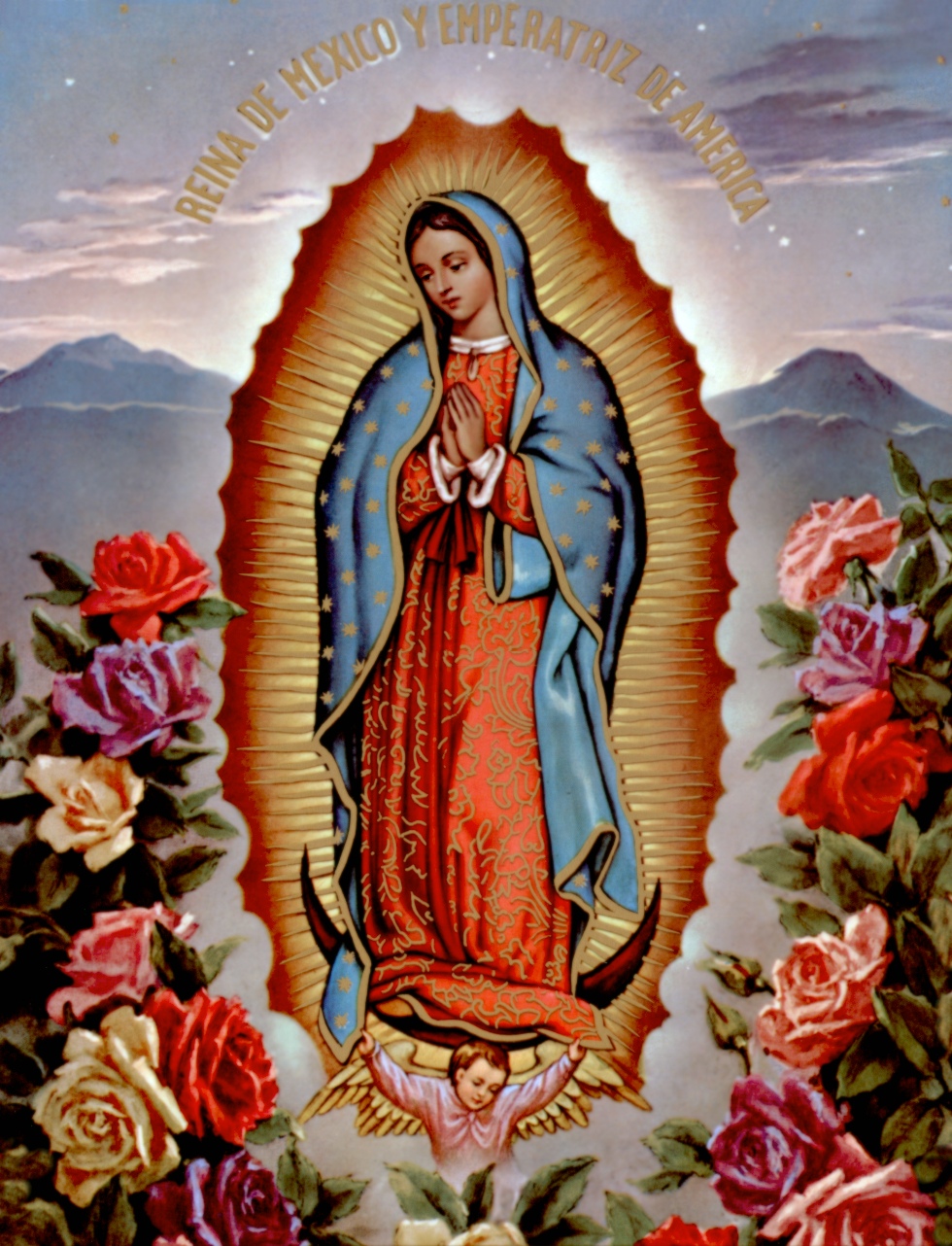 Every year, millions of pilgrims travel to the Basilica of Guadalupe in Mexico City to pay their respects or to earn favor from the Virgin. Some spend days walking or even crawling on their knees in hopes of finding healing, peace, or a better life.
Every year, millions of pilgrims travel to the Basilica of Guadalupe in Mexico City to pay their respects or to earn favor from the Virgin. Some spend days walking or even crawling on their knees in hopes of finding healing, peace, or a better life.Our Lady of Guadalupe--according to Roman Catholic tradition, the Virgin of Guadalupe, or the Virgin Mary, made her appearance before Juan Diego in a vision in 1531. The Virgin of Guadalupe holds a special place in the religious life of Mexico and is one of the most popular religious devotions. Her image has played an important role as a national symbol of Mexico.
Juan Diego was an Aztec who had converted to Catholocism, and tradition says that Mary appeared to Juan Diego on December 9, 1531 and again on December 12, 1531. She asked him to build a shrine on that very hill where she appeared to him. On her second appearance to him, she told him to collect the roses that were growing there on the hill and take them to the Bishop tas proof of her request. So, Juan Diego collected the roses in his cloak and took them to the Bishop. As he opened his cloak to present the roses, he discovered that the image of the virgin was miraculously imprinted on his cloak. (That cloak is on display today at the Basilica.)
Interestingly, there is no evidence documenting this appearance until 1648. The bishop who met Juan Diego never mentions the Virgin of Guadalupe or Juan Diego in any of his writings, something that should have been very important to report.
In 1737, the Virgin of Guadalupe was named as the patroness of Mexico City and 9 years later she was accepted as the patron saint for all of New Spain (which included parts of California as well as Mexico, Guatemala and El Salvador). In 1754, Pope Benedict XIV granted her a feast and mass for December 12.
In our area of Chiapas, it was interesting to observe how the December 12 holiday is celebrated. It began days earlier when we noticed fireworks. Lots and lots of loud fireworks. (Fireworks here are rarely pretty like in the U.S. Usually, just loud bangs.) Then we began to see pilgrimages to the Guadalupe Church. In one evening we watched 4 mini-parades of people walking, singing, and lighting fireworks. Then we realized that people were walking from as far away as Tuxtla, if not farther. We saw groups of 30 people walking over the mountain, carrying candles (because it was after dark), next to a very dangerous highway. There were masses held frequently at the Guadalupe Church. And of course, on the 12th, there were fireworks every hour of the day.
No comments:
Post a Comment